Audio Technica AT-LP5x Review
On inheriting a collection of records I resisted the temptation to get back into vinyl for a while but on the lead up to Christmas I convinced myself it was an itch I had to scratch and so began the search for a new turntable.
I was in my teens the last time I had a turntable so this really was starting from zero trying to decipher all of the jargon and strong opinions in the world of vinyl. The first thing to decide was budget and given this was a bit of a whim I wasn’t willing to go nuts but I also wanted to make this a worthwhile venture which had me looking at upper entry-level to mid-range turntables. The next thing to decide given the budget was vintage vs new; a hotly debated topic. By this point I was eager to get sorting the record collection sat in the spare room so decided new was the way to go. I started my search looking at decks from the likes of Rega, Pro-Ject, Fluance and Audio Technica to name a few. The last turntable I used was my dad’s Akai AP-206 direct-drive deck from the 70s which I remember fondly and I quickly decided that whilst the belt-drive decks from Rega and Pro-Ject were likely the way to go in terms of sound quality, things like manually shifting a belt to change speeds was a step too far. This significantly cut down my options and inevitably I decided I wanted a Technics SL-1500C but then I remembered I had a budget which kept landing me back at the Audio Technica AT-LP5x. After much deliberation I placed an order…
Overview
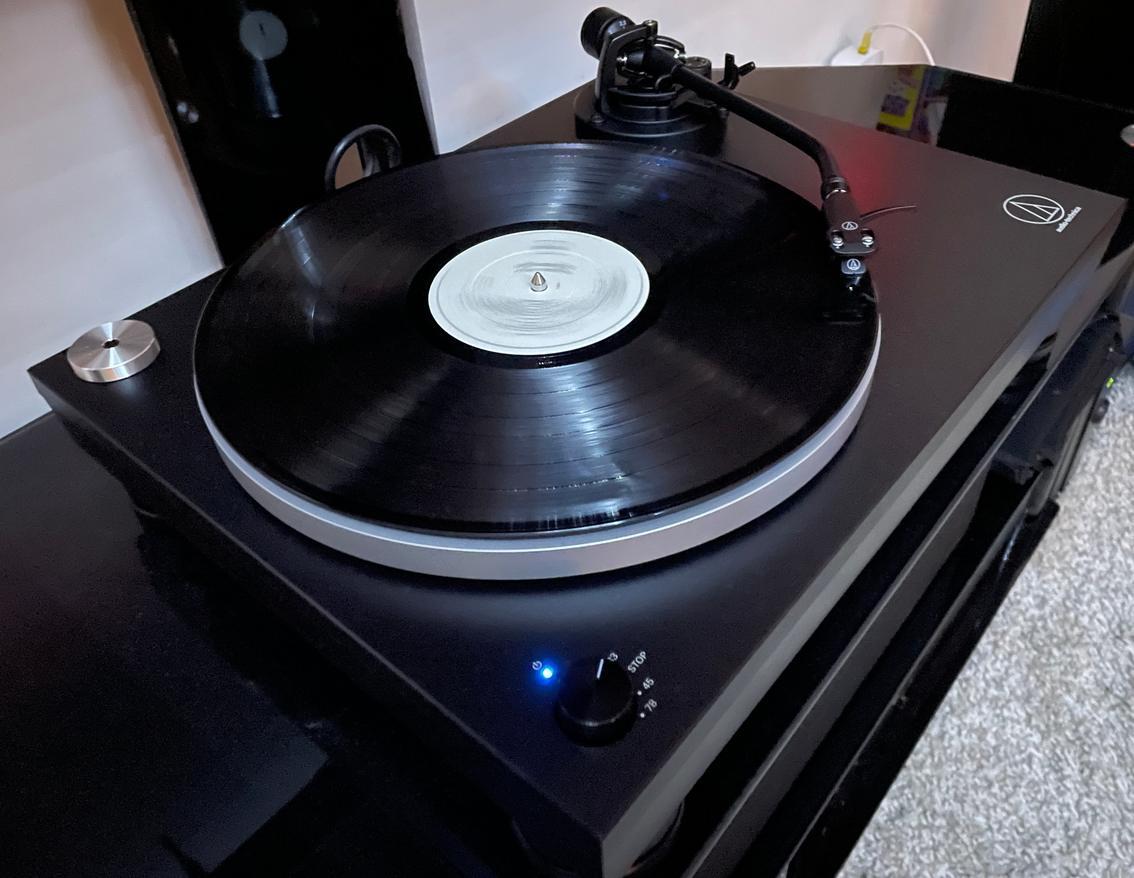
The AT-LP5x is a fully manual direct-drive “Super OEM” turntable manufactured by Hanpin in China like most modern Audio Technica turntables. It has many “lifestyle” features such as a built-in preamp, USB output and pre-mounted AT-VM95E cartridge to a AT-HS6 headshell. Everything is included for a beginner to get up and running including comprehensive instructions on balancing the tonearm which is the most complicated part of the setup process. The motor is a brushless design with quartz speed control. Speeds of 33, 45 and 78 are all supported.
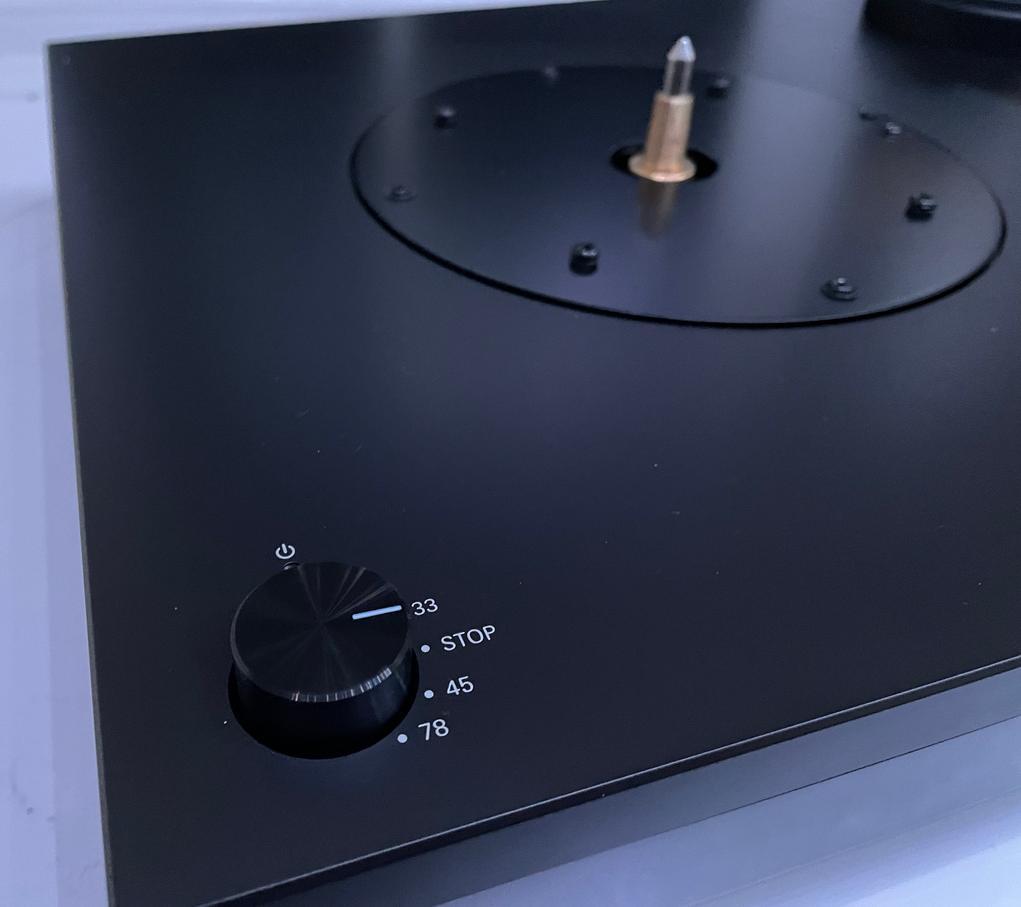
What’s In The Box?
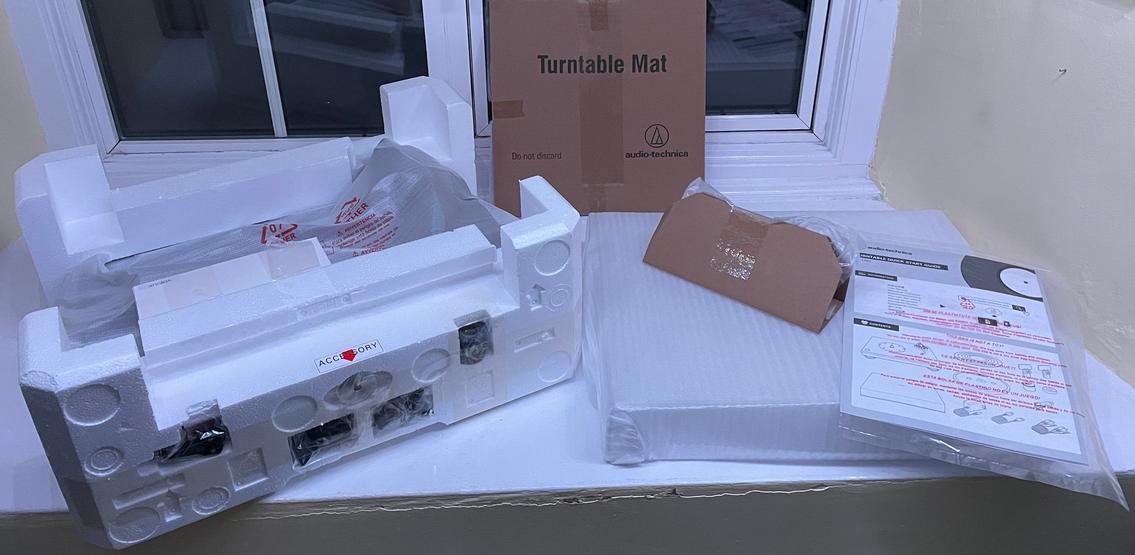
Everything comes well packaged and wrapped. The main turntable and platter come in substantial polystyrene packaging. The platter mat, dust cover, cables and manual are packaged separately. Accessories such as counterweight and hinges etc… can be found embedded in one end of the polystyrene packaging protecting the turntable.
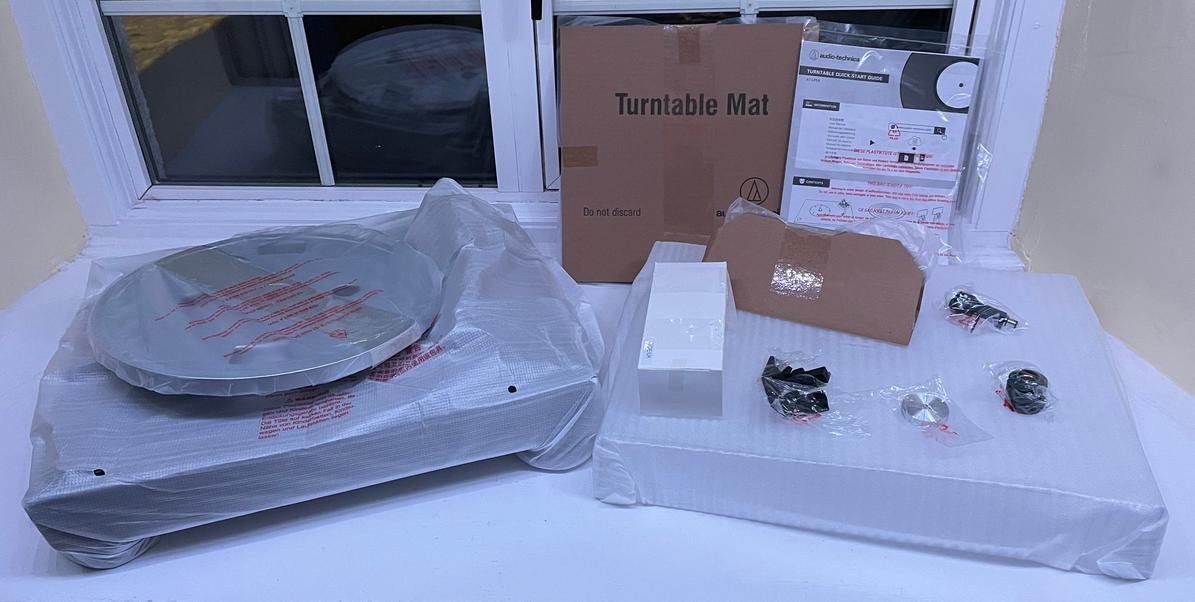
The turntable comes complete with all required cables including gold plated RCA, USB and 12V DC adapter. Unlike the LP5 before it the power supply has been removed from the main chassis in the LP5x which in theory removes a potential source of interference.

Unwrapping the main turntable presents you with a smart looking, albeit plastic plinth mounted on feet with a good degree of mobility and isolation. The turntable isn’t particularly heavy and as such the plinth doesn’t appear all that well damped when tapped but at this price point it seems reasonable.
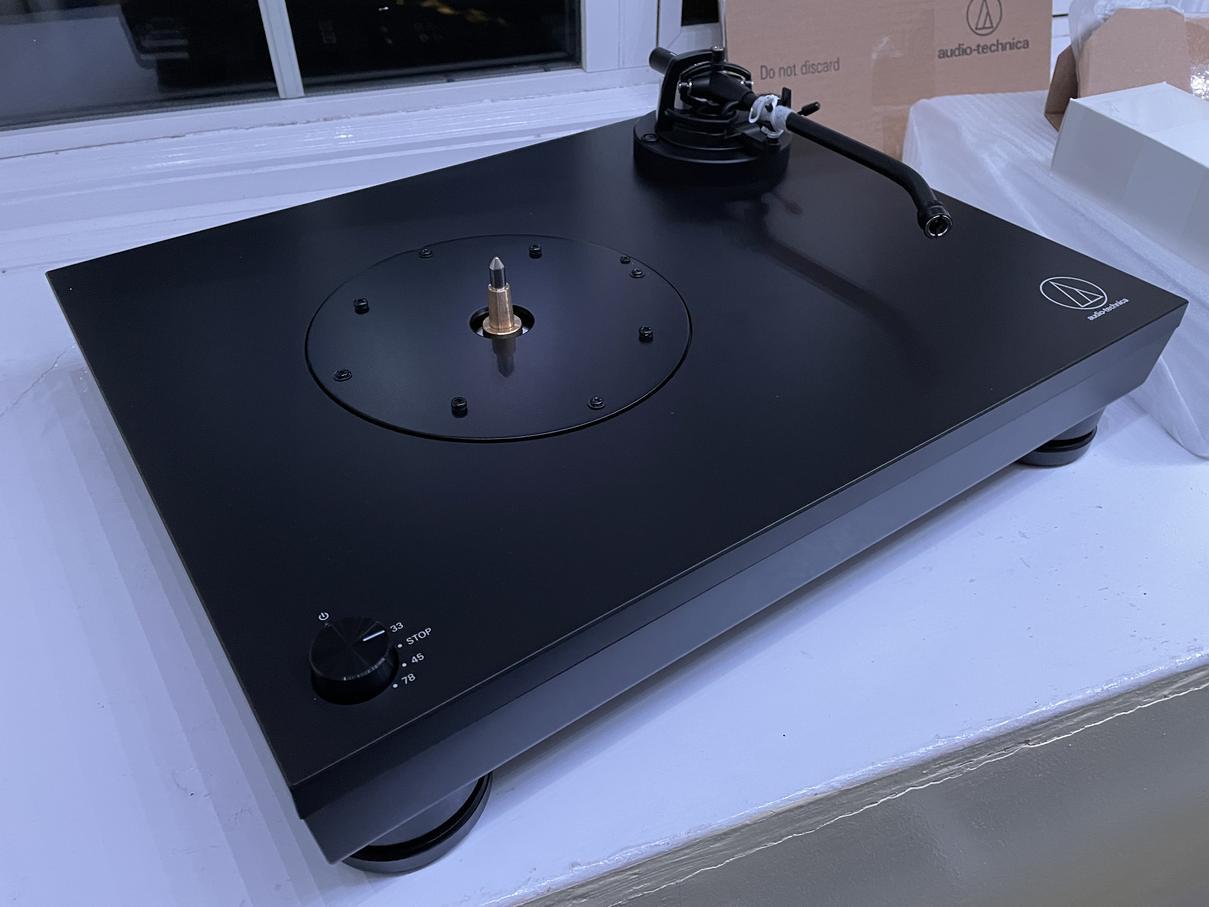
Build & Setup
The platter is a simple aluminum design and for me the weakest part of the AT-LP5x both visually and in terms of quality. It is easy enough to slide on and off the tapered motor spindle but when spinning I could see my example wasn’t running completely true which from reading other reviews isn’t uncommon. That said I don’t think it is bad enough to make any audible difference on a turntable at this level.
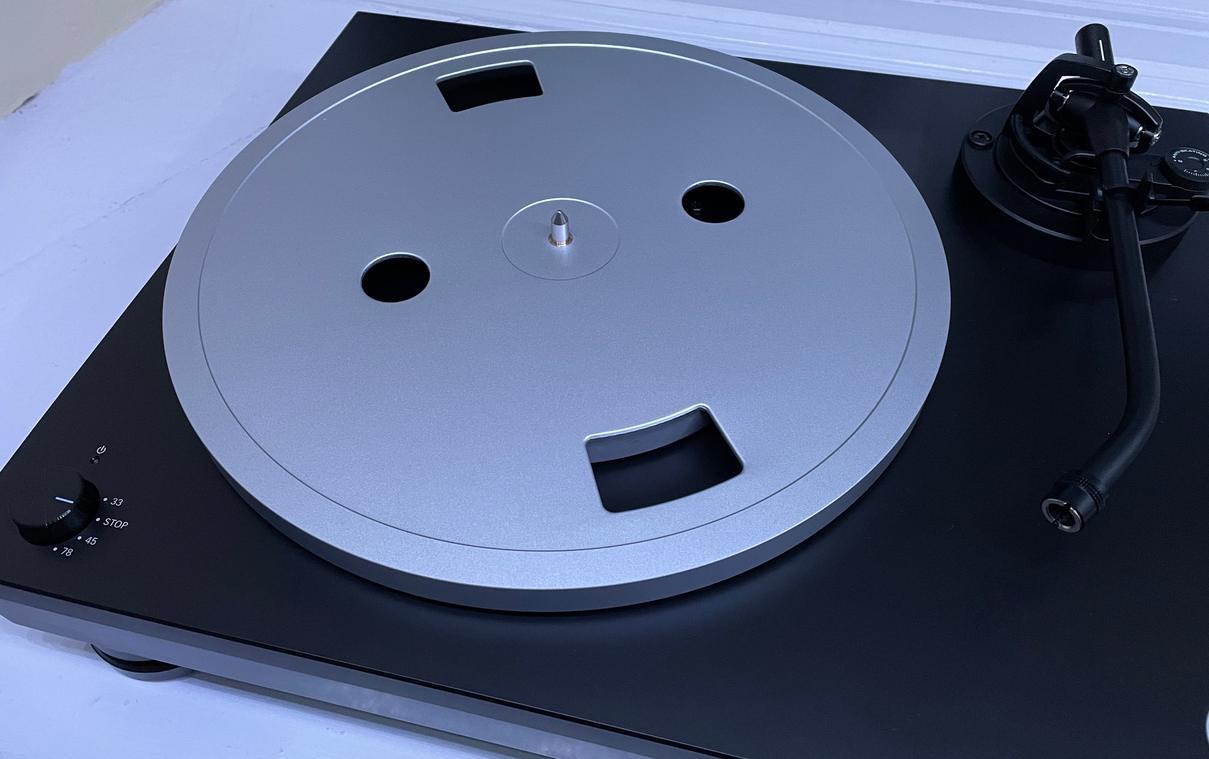
Next up is the platter mat; A good quality, 5mm thick rubber item which will offer good traction and damping for the record.
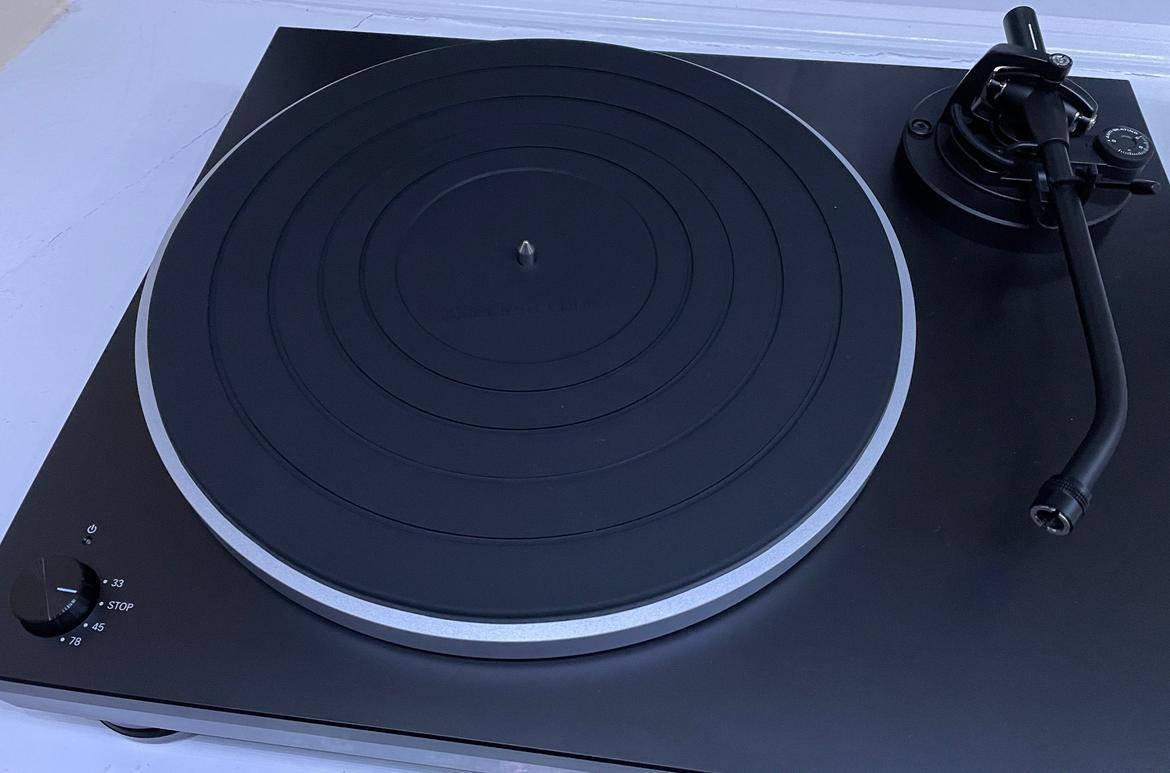
The next job is to install the headshell and cartridge which comes pre-assembled and simply requires attaching to the tonearm using the H4 Bayonet mount.
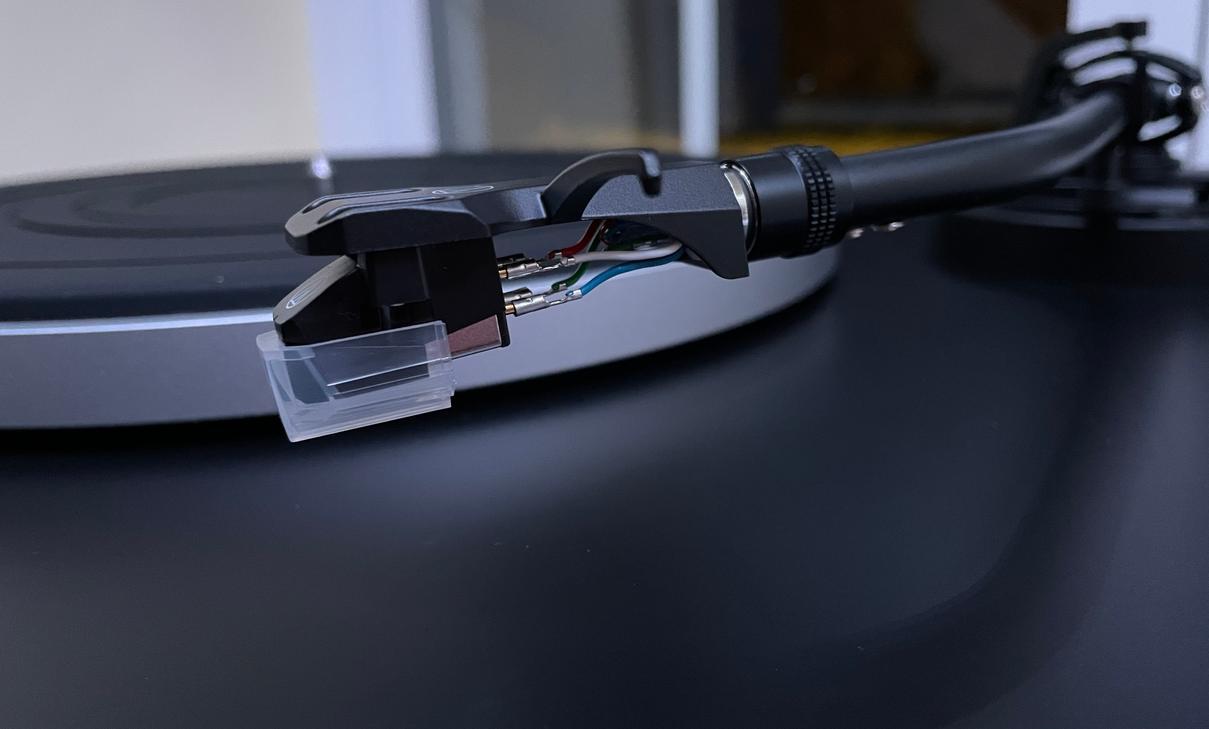
The counterweight simply slides onto the back of the tonearm at which point you are ready to get everything balanced. Balancing the tonearm requires some patience but essentially involves adjusting the counterweight until the tonearm and stylus is floating just above and parallel to the platter. Once balanced the front ring of the counterweight can be set to zero and at this point the counterweight can be adjusted to the required tracking force for the cartridge (around 2 grams for the AT-VM95E). Setting the anti-skate dial to 2 initially is also recommended as a good starting point.
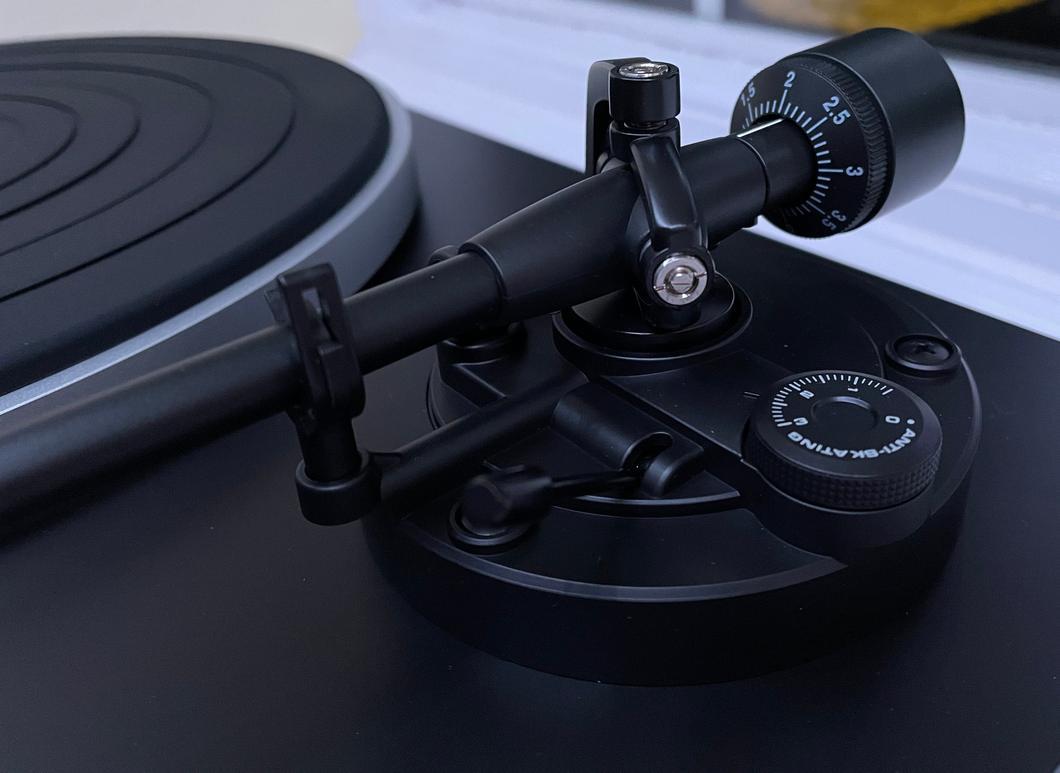
It’s worth mentioning that I was impressed with the quality of the tonearm assembly. The tonearm moves fluidly in all directions and has a good level of adjustment. The anti-skate also appears to work well which hasn’t been the case with previous models.
Finally, if you wish to use it, the dust cover can be fitted by inserting the two hinges into the back of the turntable chassis and slotting the cover on top. The dust cover works well however I removed the hinges as I don’t have room to open the dust cover on my stand and the hinges spring back brutally whenever you fully remove the dust cover. I simply place the dust cover over the turntable manually when not in use.
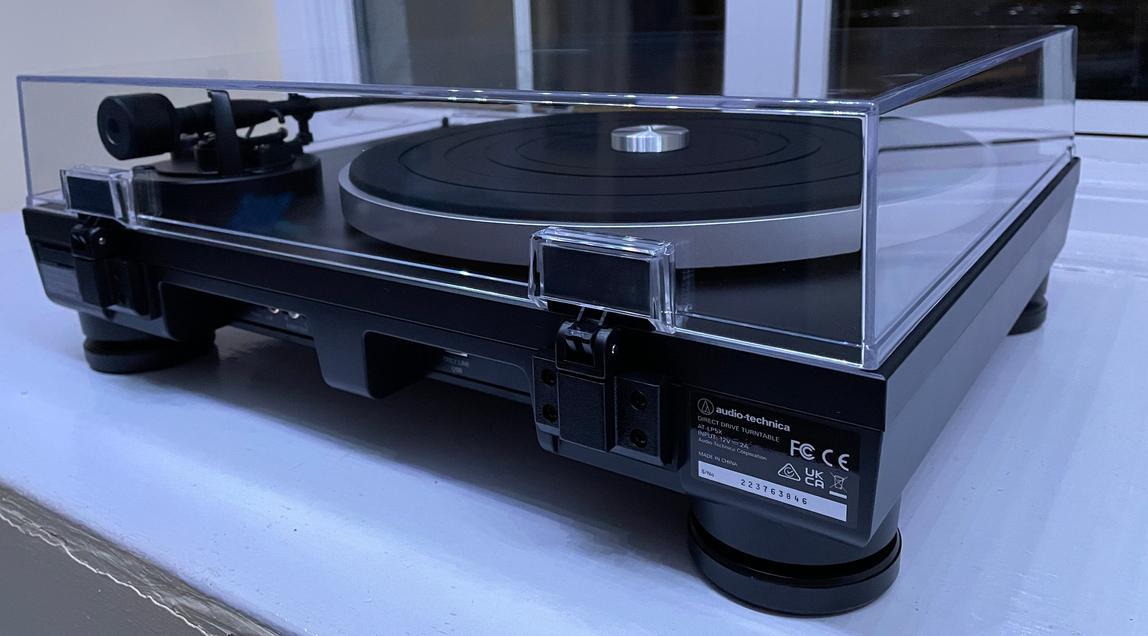
At the back of the turntable you will find the RCA and ground connectors on the left and the USB and DC power jack on the right. It’s good to see some distance between the two sets of connectors indicating they are likely on separate circuit boards to minimise interference internally.
There are two switches next to the RCA outputs which can be used to configure the internal preamp for either a moving-magnet or moving-coil cartridge or completely disable the internal preamp in order to use an external one. By default the RCA outputs are set to “line” level indicating the built-in preamp is enabled and “MM” for the included moving-magnet cartridge.
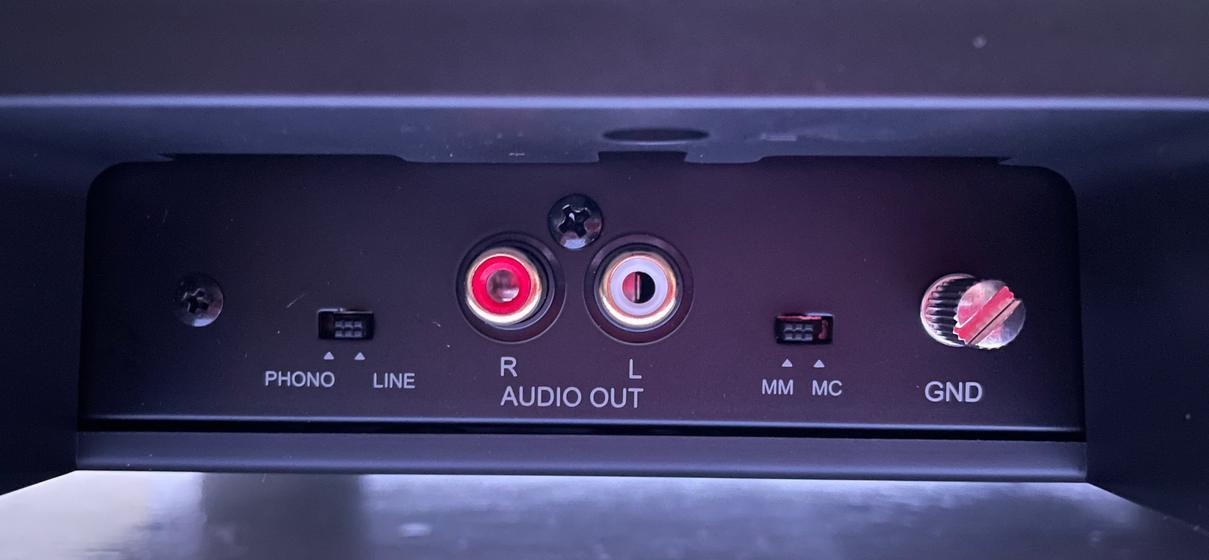
The USB output can be used to connect the turntable to a PC in order to digitise your vinyl collection. This utilises a Texas Instruments Burr-Brown ADC chip supporting up to 48KHz, 16-bit audio which is ample for this use case. One thing to note is that the USB output is only active if the internal preamp is being used. I tested the USB output with both Windows and Linux and the results were really quite good. The turntable automatically puts itself into a stanby mode which turns off the preamp but the USB audio connection remains active. It’s worth mentioning that I have no interest in digitising records however a USB output can also be used to easily integrate vinyl playback with a multi-room audio solution such as Snapcast which I will cover in a future post.
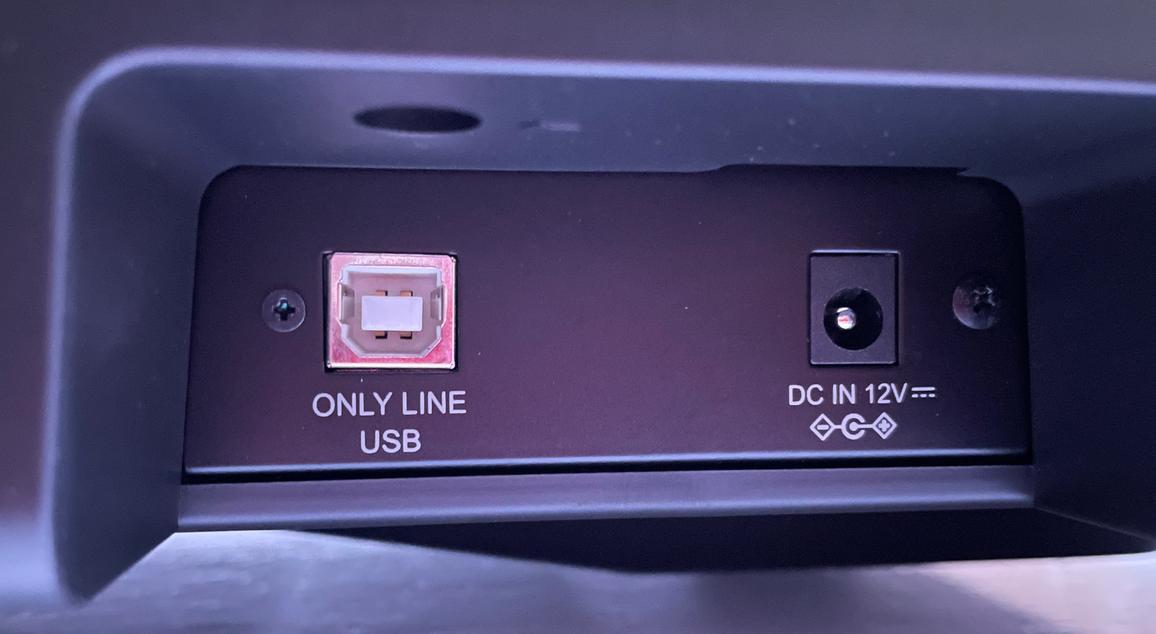
Click Here for sample recordings from the AT-LP5x USB output.
Performance
Turn the dial to your desired speed and the motor starts up quickly with a faint chugging as speed stabilises. Torque isn’t as strong as many direct-drive turntables but is more than adequate. No fancy automatic stop/start or auto-cueing to be found here but the cueing mechanism lifts and lowers the tonearm effectively. Initial impressions are that the pairing of preamp and AT-VM95E cartridge is a good one. Tonal balance appears reasonably neutral but does favour a warmer presentation with solid bass and midrange without any exaggerated highs. Those looking for a digital sounding presentation of their vinyl will need to look elsewhere or try a different cartridge. For me the balance is generally good although I do feel like a different stylus variant or perhaps better quality external preamp would be able to extract more high frequency detail and add some extra definition to more complex basslines but at this price point it’s a great start.
Speed stability in my testing was very good with no noticeable fluctuations during extended string sections or piano notes. Cartridge alignment and channel balance also seemed correct out-of-the-box which is just as well as no protractor or method of aligning the cartridge is included. The tonearm tracks the record effortlessly. Even more challenging records which make the cartridge look like a train on a roller coaster track rarely pose a problem.
The only other preamp I have is integrated into my Onkyo A-9010UK so I hooked the AT-LP5x up to compare it’s performance to the integrated preamp. It was clear very quickly that the preamp in the Onkyo is pretty terrible. Compared to the integrated preamp the sound was thin and bright which gave the impression of increased clarity but at the expense of any meaningful bass weight or richness to the sound. In summary the complete opposite to the integrated preamp which with the AT-LP5x I don’t think is at all bad or by any means limiting to the turntables overall performance out-of-the-box. I get the impression that the integrated preamp would be more than capable of highlighting the benefits of a cartridge or platter upgrade.
One thing to note is with my setup there was noticeable background hum despite the external power supply and efforts to isolate internal components. This didn’t seem to change regardless of whether or not the motor was in operation and the hum is worse if USB is connected which is prone to interference. On my speakers the background noise was only audible in reasonably close proximity so from an average listening position it should be acceptable although something I would rather eradicate.
Conclusion
At this price point for an upper-entry level turntable I don’t think you can go far wrong, particularly if direct-drive appeals. OK, there are definitely more ‘audiophile’ turntables out there and many people will see “OEM” turntable and rule it out on the spot but at this price point the LP5x strikes a good balance between functionality and sound quality. The tonearm and preamp are particular highlights and I also have no complaints about the motor which at least creates a solid foundation for potential upgrades many of which can be had before reaching the same cost as even the cheapest Technics deck.
Whilst there has clearly been commendable efforts to isolate and dampen internal components the plinth itself is a weak point in terms of weight and damping. I can’t help but feel that a better quality plinth would really help bass definition at louder volumes. The platter could definitely be better but at least this is an easier thing to look at upgrading if desired. The only other negative of note is the audible hum which naturally means the noise floor is higher than it could be if internal components were better isolated or better quality.
There are several things I would like to experiment with in terms of upgrading the stock configuration. The AT-VM95 series of cartridges come with replaceable styli and there are a number of options in the range. Upgrading to a nude variant or microlinear stylus will likely enable this deck to extract more detail particularly in the higher frequencies which would be welcome. I would also be keen to explore better power supply options to see if this helps lower the noise floor as well as external preamps to see what sonic potential is being left on the table. Other things to explore would be a platter upgrade and potentially platter mat materials as well as additional isolation.
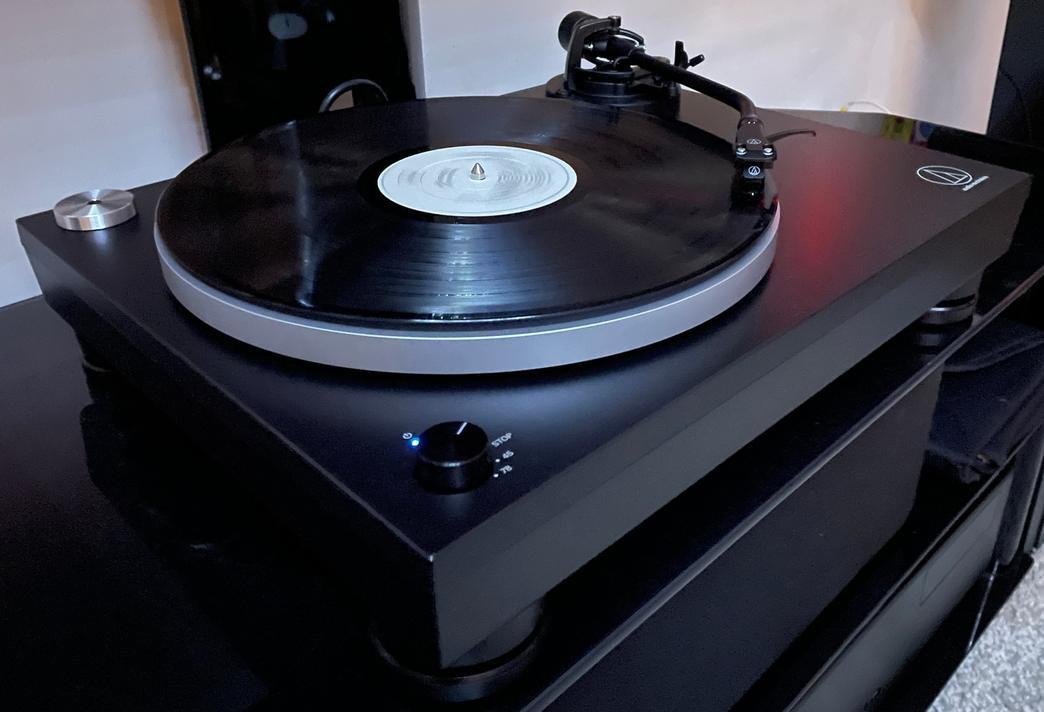
That’s all for now… What is your experience with modern turntables from Audio Technica?
Any thoughts, questions or suggestions please do leave a comment!